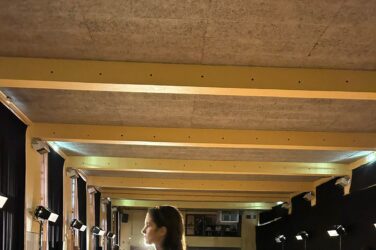Jentsch and Freud first wrote about the psychological background of the uncanny. But what is the legacy of their concept in European art? Christian Sawalski brings us some clues and introduces a few of the most influential European artists exploring the uncanny.
It’s hard to escape from uncanny images in contemporary art’s current climate. But what is the origin of this? Is it just a trend or does it have a long history behind it? Going back to its literary roots, Christian Sawalski puts the uncanny in context.
Is uncanny art predominantly European? Possibly not. But taking a walk through the history of modern and contemporary art, one can easily get the idea that artists who are interested in this psychological part of creativity are surprisingly likey to be of European descent. Works by Arnold Böcklin, Caspar David Friedrich, Johann Heinrich Füssli, Théodore Géricault and Egon Schiele spring to mind. Especially this year, while walking through the 55th Biennale di Venezia, the visitor is presented with an array of profoundly uncanny works by artists from Belgium, Poland, the Netherlands and other European countries.

The origin of the uncanny
Shortly after the turn of the century, two men tried to gain an understanding of the psychological process behind the feeling we get when we see something uncanny. In his 1906 essay On the Psychology of the Uncanny, the German psychiatrist Ernst Anton Jentsch made the assumption that the uncanny derived from an uncertainty of the intellect.
He argues that human beings decode observed information through internalised interpretation, based on their own perceptions. For him, this fear of the unknown functions as an evolutionary apparatus, a defence mechanism that triggers the learning process. A few years later, in 1919, the Austrian Sigmund Freud published his essay The Uncanny and offered a far more complex analysis in which he came to the conclusion that the uncanny is not a fear fueled by the new and unfamiliar, but rather something that has long been known yet has been estranged by the process of repression. He applies his psychological model to it and claims that this feeling comes from displaced memories and desires (what he calls the “Id”), possibly originating in times of infancy that are brought back to our consciousness by an experience and cause a sense of discomfort or anxiety.
Another origin of the uncanny might also be “animism”, the belief that objects might inherit a soul, especially human likenesses such as puppets. The creation of human likenesses is as old as art itself but a simple sculpture, like that of a historical figure, as seen in most cities around the world, is hardly uncanny. The human form has to be transformed into something not ordinary and lifelike, but unsettling, to gain a psychological momentum and become charged with a notion of the uncanny.
The human likeness
A work by Polish artist Pawel Althamer at this year’s Biennale, Venetians, consists of 90 life-sized plastic sculptures with the cast faces of actual inhabitants of Venice. Those faces have an eerily close resemblance to a death mask, a cast of the face of a recently deceased person, usually made of wax or plaster. The frozen expression suggests an intermediate realm between life and death. This transforms the sculptures into a form of memento mori, a reminder that we will all perish. Added to this, the bodies of the sculptures appear to be in a state of decomposition, the flesh already fallen from their bones, only muscles and sinews left, caught in time and movement.
Pawel Althamer’s work Venetians, at the 55th Biennale di Venezia. | Image courtesy of La Biennale Di Venezia.Another good example are the wax sculptures of Belgian artist Berlinde de Bruyckere, also present at this year’s Biennale. She says of her work that she tries to “show how helpless a body can be”. And exactly this helplessness, this manifestation of being at someone’s mercy, is what creates the uncanny character of her art. These are figures of which one does not know whether they are already dead or still alive. In her understanding “the figure as a whole is a mental state”. De Bruyckere’s themes are the body and its impermanence, its transformation into something else. But this transformation is kept in a state of anguish and distress and by this, it evokes vulnerability and empathy.
In The Uncanny, Freud argues that especially in the world of poetry and writing, these unwanted memories coincide with things that won’t occur under the conditions of experience. The world of imagination is exempt from all regulations and restriction of reality, and the writer is thus able to choose his portrayal of the world in such a way that it concurs with the familiarity of the real world. The reader, once captivated, will follow his lead. We have to apply this to the world of visual art as well, since works of art adhere to a narrative and the viewer is capable of responding to it just as they can when reading a short story or a novel. As William S. Burroughs wrote: “It is the function of the artist to evoke the experience of surprised recognition: to show the viewer what he knows but does not know that he knows”.
It is the function of the artist to evoke the experience of surprised recognition.
As adults, we usually avoid confrontations with our hidden pain and emotional atrophies. Our individual memories from proverbial times lie covered under many veils and are not easy to retrieve from wherever our mind holds these earliest impressions that still seem to determine our daily lives. But art offers us a unique opportunity to get a step closer to our inner pictures and to perceive these buried physical and mental characteristics. Works of art quite often derive their power from the fact that the viewer can project their own experiences into a seemingly realistic, though fully constructed, reality. Inner and outer world remain interwoven so that the beholder can develop his or her own understanding. Without the artist giving answers to possible upcoming questions, each viewer is left to find their own explanations. This uncertainty encourages the recipient to think about the image. We try to solve these questions, but mostly run into a dead end when the artist doesn’t offer answers. Thus, the mind remains in a kind of limbo in which only the emotions have endurance and power.

Demanding images
Sigmund Freund points out animism as a central cause of the uncanny. The US-American art historian W.J.T. Mitchell refers to exactly this subjectivity of the object, the personality of things in his book What do pictures want?. In his opinion, there is no problem in proving that the personality of the image in present times is still as strong as it was in earlier periods of human history.
The simplest example he cites is that no one would tear apart a photo of his or her mother. Although everyone knows that this photo is not alive and therefore is not supposed to be treated as a human being, everybody is willing to make an exception in these cases. Mitchell says that images possess an aura, a life of their own. He writes that paintings want to be contemplated, admired, loved and considered as beautiful, but above all, they want to have power over the viewer. “The paintings’ desire, in short, is to change places with the beholder, to transfix or paralyze the beholder, turning him or her into an image for the gaze of the picture […]”.
Examples for this “medusa effect”, as he calls it, can be found in the oeuvre of Austrian painter Gottfried Helnwein and British painter Jenny Saville. Both artists use their work to force the viewer into an almost mirror-like confrontation with the view of their imaginary counterpart. Both place the painted figures against a plain background, thus creating a form of “black box” in which nothing exists, except for what they’ve chosen to place their focus on.
Helnwein, as well as Saville, often shows a bruised or violated human being, without disclosing the act of violence. By that, they leave it to the beholder to look for clues to why the wounds were inflicted and by whom. The uncanny speculation might arise, that we, the viewers, are the violators, the society that caused this harm. The artists awaken emotions in the spectator because they clear their paintings of everything unnecessary. We will not find any rational evidence in the canvases, but instead have to remain open to their atmosphere. By that, these works of art will create feelings of constriction, entrapment and isolation.
Jenny Saville’s painting Red Stare Head IV at Royal Academy Summer Exhibition, 2010. | Image: Courtesy of the artist and Gagosian gallery.
Helpless observers
A different approach can be found in the paintings of the Belgian Michael Borremans, who depicts snapshots of human beings trapped in often surreal scenarios completing tasks that the beholder can hardly comprehend. We feel like being in the position of an undiscovered observer, a voyeur, completely oblivious about what we are witnessing. What has happened before? Are these characters acting out of their free will or are they forced to work? What will happen next? We cannot interact with the people in the paintings as is possible with works by Helnwein and Saville. We are locked out, powerless, not authorised to know what is going on. One is left in a state of suspense.
It is clear that works of art cannot solely be placed into immediate contexts of experience and association connected to aesthetics, but rather have to be observed from the psychological point of view of engaging with an object-human relationship. So why is the uncanny so deeply rooted in Europe? After the arrival of photography, the artist no longer needed to create work that is purely representational, by that it was free to become a medium of psychological expression. Artists moved on from representing, or rather recreating reality, to actually making it. There is a long, futile history of psychological, uncanny art in European countries and, since modern and contemporary art is build upon these foundations, it is no surprise that this tendency is still very much alive.
Cover photo: Christian Sawalski (CC BY 3.0). Berlinde De Bruyckere’s Pietà at Hamburger Bahnhof – BODY PRESSURE 2013-2014. Courtesy of the artist and Hauser & Wirth.





